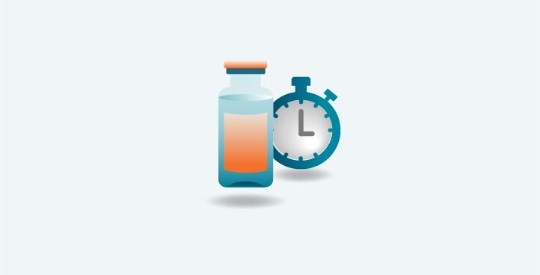| ADVERSE REACTIONS | OPDIVO + YERVOY (n=547) |
SUNITINIB (n=535) | OPDIVO + YERVOY (n=547) |
SUNITINIB (n=535) |
|---|---|---|---|---|
| GRADES 1-4 (%) | GRADES 1-4 (%) | GRADES 3-4 (%) | GRADES 3-4 (%) | |
| Adverse reactions All causes |
99 | 99 | 65 | 76 |
| General disorders & administration site conditions Fatigue* Pyrexia Edema† |
58 25 16 |
69 17 17 |
8 0.7 0.5 |
13 0.6 0.6 |
| Respiratory, thoracic, & mediastinal disorders Cough/productive cough Dyspnea/exertional dyspnea |
28 20 |
25 21 |
0.2 2.4 |
0.4 2.1 |
| Gastrointestinal disorders Diarrhea Nausea Vomiting Abdominal pain Constipation |
38 30 20 19 17 |
58 43 28 24 18 |
4.6 2.0 0.9 1.6 0.4 |
6 1.5 2.1 1.9 0 |
| Skin & subcutaneous tissue disorders Rash‡ Pruritus/generalized pruritus |
39 33 |
25 11 |
3.7 0.5 |
1.1 0 |
| Endocrine disorders Hypothyroidism |
18 | 27 | 0.4 | 0.2 |
| Nervous system disorders Headache |
19 | 23 | 0.9 | 0.9 |
| Metabolism & nutrition disorders Decreased appetite |
21 | 29 | 1.8 | 0.9 |
| Musculoskeletal & connective tissue disorders Musculoskeletal pain§ Arthralgia |
37 23 |
40 16 |
4.0 1.3 |
2.6 0 |
1L Intermediate- or Poor-Risk aRCC

Selected safety profile
aRCC=advanced renal cell carcinoma.
INDICATION OPDIVO® (nivolumab), in combination with YERVOY® (ipilimumab), is indicated for the first-line treatment of adult patients with intermediate or poor risk advanced renal cell carcinoma (RCC).
CHECKMATE 214: 1L INTERMEDIATE- OR POOR-RISK ADVANCED RENAL CELL CARCINOMA (aRCC)
A well-known safety profile with OPDIVO® + YERVOY®1
CHECKMATE 214: FEWER OVERALL GRADE 3-4 ADVERSE REACTIONS IN THE OPDIVO + YERVOY ARM VS SUNITINIB (65% VS 76%, RESPECTIVELY)1
- A lower incidence of overall Grade 3-4 adverse reactions occurred with OPDIVO + YERVOY vs sunitinib (65% and 76%, respectively)1
- Treatment discontinuation rate due to adverse reactions was 31% with OPDIVO + YERVOY vs 21% with sunitinib1,2
- Dose interruption due to adverse reactions occurred in 54% of patients receiving OPDIVO + YERVOY and 43% receiving sunitinib1,3
- In the sunitinib group, 53% of patients required a dose reduction; dose reductions were not permitted in the OPDIVO + YERVOY treatment group4
- Serious adverse reactions occurred in 59% of patients receiving OPDIVO + YERVOY and in 43% of patients receiving sunitinib1,5
- The most frequent serious adverse reactions reported in ≥2% of patients receiving OPDIVO + YERVOY were diarrhea, pyrexia, pneumonia, pneumonitis, hypophysitis, acute kidney injury, dyspnea, adrenal insufficiency, and colitis; for sunitinib, they were pneumonia, pleural effusion, and dyspnea1
- The most common adverse reactions (reported in at least 20% of OPDIVO + YERVOY-treated patients) were fatigue, rash, diarrhea, musculoskeletal pain, pruritus, nausea, cough, pyrexia, arthralgia, decreased appetite, dyspnea, and vomiting1
Toxicity was graded per National Cancer Institute Common Terminology Criteria for Adverse Events (NCI CTCAE) Version 4.1
*Includes asthenia.1
†Includes peripheral edema, peripheral swelling.1
‡Includes dermatitis described as acneiform, bullous, and exfoliative, drug eruption, rash described as exfoliative, erythematous, follicular, generalized, macular, maculopapular, papular, pruritic, and pustular, fixed-drug eruption.1
§Includes back pain, bone pain, musculoskeletal chest pain, musculoskeletal discomfort, myalgia, neck pain, pain in extremity, spinal pain.1
CHECKMATE 214: GRADE 1-4 LABORATORY ABNORMALITIES THAT OCCURRED IN >15% OF PATIENTS ON OPDIVO + YERVOY1
PERCENTAGE OF PATIENTS WITH WORSENING LABORATORY TEST FROM BASELINE1*
| LABORATORY ABNORMALITIES | OPDIVO + YERVOY (n=547) |
SUNITINIB (n=535) | OPDIVO + YERVOY (n=547) |
SUNITINIB (n=535) |
|---|---|---|---|---|
| GRADES 1-4 (%) | GRADES 1-4 (%) | GRADES 3-4 (%) | GRADES 3-4 (%) | |
| Chemistry Increased lipase Increased creatinine Increased ALT Increased AST Increased amylase Hyponatremia Increased alkaline phosphatase Hyperkalemia Hypocalcemia Hypomagnesemia |
48 42 41 40 39 39 29 29 21 16 |
51 46 44 60 33 36 32 28 35 26 |
20 2.1 7 4.8 12 10 2 2.4 0.4 0.4 |
20 1.7 2.7 2.1 7 7 1 2.9 0.6 1.6 |
| Hematology Anemia Lymphopenia |
43 36 |
64 63 |
3 5 |
9 14 |
In addition, among patients with TSH less than or equal to the ULN at baseline, a lower proportion of patients experienced a treatment-emergent elevation of TSH greater than the ULN in the OPDIVO + YERVOY group compared to the sunitinib group (31% and 61%, respectively).1
*Each test incidence is based on the number of patients who had both baseline and at least one on-study laboratory measurement available: OPDIVO + YERVOY group (range: 490–538 patients) and sunitinib group (range: 485–523 patients).1
ALT=alanine aminotransferase; aRCC=advanced renal cell carcinoma; AST=aspartate aminotransferase; TSH=thyroid stimulating hormone.

Treatment Modifications
See recommended dosing modifications for immune-mediated adverse reactions.

Dosing Schedules
Find dosing information to get patients started on therapy.

Another aRCC Option
See the selected safety profile of another OPDIVO-based combination for advanced RCC.
References:
- OPDIVO [package insert]. Princeton, NJ: Bristol-Myers Squibb Company.
- Data on file. NIVO 462. Princeton, NJ: Bristol-Myers Squibb Company; 2019.
- Data on file. NIVO 463. Princeton, NJ: Bristol-Myers Squibb Company; 2019.
- Data on file. NIVO 369. Princeton, NJ: Bristol-Myers Squibb Company; 2019.
- Data on file. NIVO 420. Princeton, NJ: Bristol-Myers Squibb Company; 2019.





